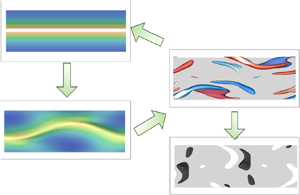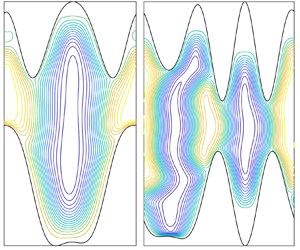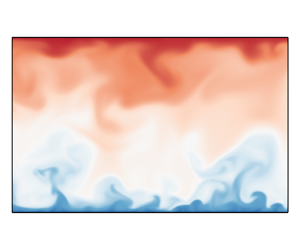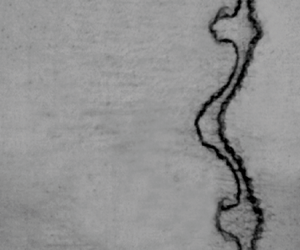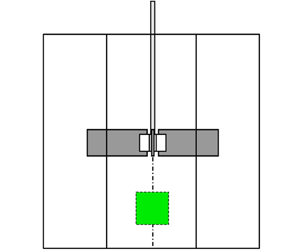Refine listing
Actions for selected content:
1417366 results in Open Access
On the generation of near-wall dilatational motions in hypersonic turbulent boundary layers
-
- Journal:
- Journal of Fluid Mechanics / Volume 984 / 10 April 2024
- Published online by Cambridge University Press:
- 04 April 2024, A44
-
- Article
- Export citation
Optimal wall shapes and flows for steady planar convection
-
- Journal:
- Journal of Fluid Mechanics / Volume 984 / 10 April 2024
- Published online by Cambridge University Press:
- 04 April 2024, A43
-
- Article
-
- You have access
- Open access
- HTML
- Export citation
ETS volume 44 issue 5 Cover and Front matter
-
- Journal:
- Ergodic Theory and Dynamical Systems / Volume 44 / Issue 5 / May 2024
- Published online by Cambridge University Press:
- 04 April 2024, pp. f1-f2
- Print publication:
- May 2024
-
- Article
-
- You have access
- Export citation
The Ascent of the Canadian Judicial Council: Bill C-9 and the Move Towards Judicialized Governance
-
- Journal:
- Canadian Journal of Political Science/Revue canadienne de science politique / Volume 57 / Issue 1 / March 2024
- Published online by Cambridge University Press:
- 04 April 2024, pp. 195-214
-
- Article
-
- You have access
- Open access
- HTML
- Export citation
Calendar of Forthcoming Meetings: (Occurring after 1 July 2024)
-
- Journal:
- Powder Diffraction / Volume 39 / Issue 2 / June 2024
- Published online by Cambridge University Press:
- 04 April 2024, pp. 115-116
-
- Article
-
- You have access
- HTML
- Export citation
Signature-based validation of real-world economic scenarios
-
- Journal:
- ASTIN Bulletin: The Journal of the IAA / Volume 54 / Issue 2 / May 2024
- Published online by Cambridge University Press:
- 04 April 2024, pp. 410-440
- Print publication:
- May 2024
-
- Article
- Export citation
APPROXIMATION OF IRRATIONAL NUMBERS BY PAIRS OF INTEGERS FROM A LARGE SET
- Part of
-
- Journal:
- Bulletin of the Australian Mathematical Society / Volume 110 / Issue 3 / December 2024
- Published online by Cambridge University Press:
- 03 April 2024, pp. 439-447
- Print publication:
- December 2024
-
- Article
-
- You have access
- Open access
- HTML
- Export citation
CANTOR’S THEOREM MAY FAIL FOR FINITARY PARTITIONS
- Part of
-
- Journal:
- The Journal of Symbolic Logic , First View
- Published online by Cambridge University Press:
- 03 April 2024, pp. 1-18
-
- Article
- Export citation
Direct numerical simulations of compressible turbulent channel flows with asymmetric thermal walls
-
- Journal:
- Journal of Fluid Mechanics / Volume 984 / 10 April 2024
- Published online by Cambridge University Press:
- 03 April 2024, A37
-
- Article
- Export citation
The Late Miocene Talpidae (Eulipotyphla, Mammalia) from the Pannonian Region, Slovakia
-
- Journal:
- Journal of Paleontology / Volume 98 / Issue 1 / January 2024
- Published online by Cambridge University Press:
- 03 April 2024, pp. 128-151
-
- Article
- Export citation
Ray Kea and the Historians of the Gold Coast: Debates Over Continuity and Rupture in African and African Diaspora Atlantic Histories
-
- Journal:
- The Journal of African History / Volume 65 / Issue 2 / July 2024
- Published online by Cambridge University Press:
- 03 April 2024, pp. 259-266
-
- Article
-
- You have access
- Open access
- HTML
- Export citation
The Ukrainian Refugee Crisis and the Politics of Public Opinion: Evidence from Hungary
-
- Journal:
- Perspectives on Politics / Volume 22 / Issue 4 / December 2024
- Published online by Cambridge University Press:
- 03 April 2024, pp. 989-1014
- Print publication:
- December 2024
-
- Article
-
- You have access
- Open access
- HTML
- Export citation
Exclusionary Mechanisms of Social Policy Redistribution in Hungary
-
- Journal:
- Social Policy and Society , First View
- Published online by Cambridge University Press:
- 03 April 2024, pp. 1-16
-
- Article
-
- You have access
- Open access
- HTML
- Export citation
Mode coupling between two different interfaces of a gas layer subject to a shock
-
- Journal:
- Journal of Fluid Mechanics / Volume 984 / 10 April 2024
- Published online by Cambridge University Press:
- 03 April 2024, A38
-
- Article
- Export citation
Introduction to the issue and volume 42 in review
-
- Journal:
- Politics and the Life Sciences / Volume 43 / Issue 1 / Spring 2024
- Published online by Cambridge University Press:
- 03 April 2024, pp. 1-3
-
- Article
- Export citation
Zeros of Rankin–Selberg L-functions in families
- Part of
-
- Journal:
- Compositio Mathematica / Volume 160 / Issue 5 / May 2024
- Published online by Cambridge University Press:
- 03 April 2024, pp. 1041-1072
- Print publication:
- May 2024
-
- Article
- Export citation
Introduction to the Special Issue—COVID-19, international relations, and security studies: Has the pandemic altered the study and practice of international security?
-
- Journal:
- Politics and the Life Sciences / Volume 43 / Issue 1 / Spring 2024
- Published online by Cambridge University Press:
- 03 April 2024, pp. 4-10
-
- Article
- Export citation
2023 IPA International Congress Book of Abstracts - S10: Needs assessment, the basic tool for psychogeriatric care – ADDENDUM
-
- Journal:
- International Psychogeriatrics / Volume 36 / Issue 6 / June 2024
- Published online by Cambridge University Press:
- 03 April 2024, pp. 514-517
-
- Article
- Export citation
Economic Diplomacy and Home State Responsibility for Human Rights Abuses Involving Extractive Industries Abroad: The Case of Canada
-
- Journal:
- Business and Human Rights Journal / Volume 9 / Issue 2 / June 2024
- Published online by Cambridge University Press:
- 03 April 2024, pp. 321-327
-
- Article
-
- You have access
- Open access
- HTML
- Export citation
Scale-by-scale non-equilibrium with Kolmogorov-like scalings in non-homogeneous stationary turbulence
-
- Journal:
- Journal of Fluid Mechanics / Volume 984 / 10 April 2024
- Published online by Cambridge University Press:
- 03 April 2024, A35
-
- Article
- Export citation
